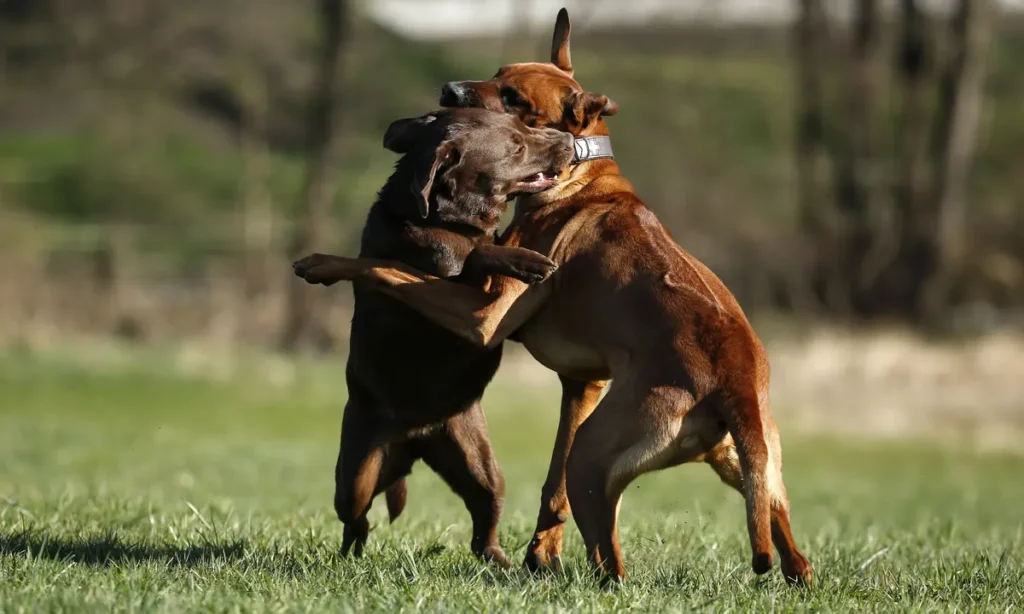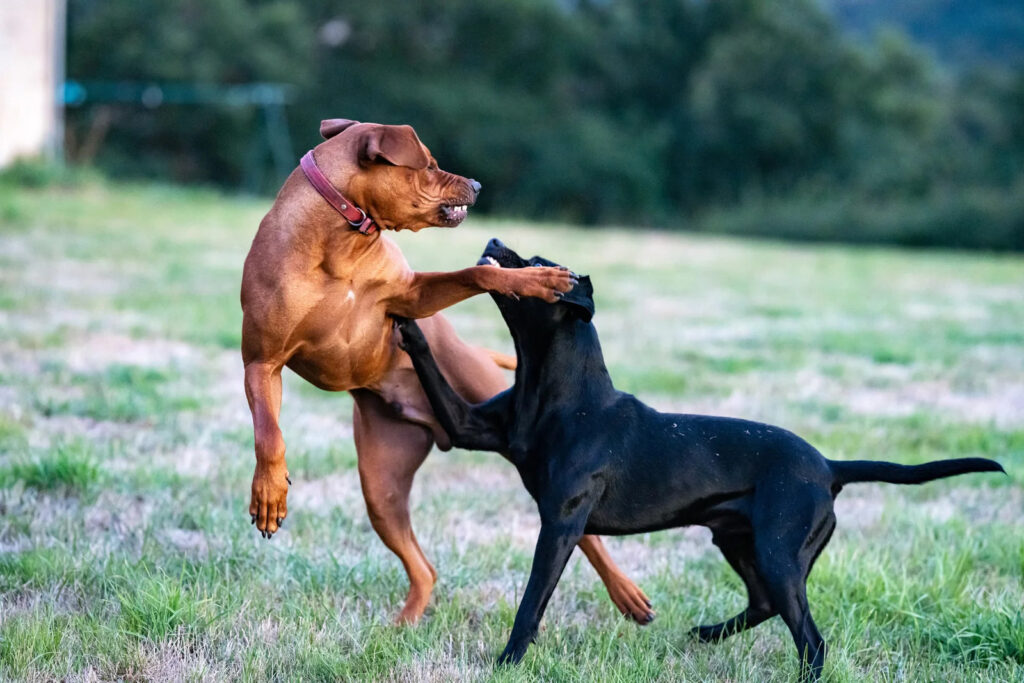Introduction
Dog fights can be terrifying and dangerous situations for both the dogs involved and the people around them. As responsible dog owners, it’s crucial to understand how to safely and effectively break up a dog fight to prevent injuries and minimize emotional trauma. In this comprehensive guide, we’ll delve into the strategies and techniques you need to master to handle such situations with confidence and skill.
Understanding Dog Behavior
Before diving into the techniques for breaking up a dog fight, it’s essential to understand the underlying causes and signs of aggression in dogs. By recognizing these cues, you can intervene early and prevent conflicts from escalating.
- Common Triggers for Dog Fights:
- Territorial aggression: Dogs may become aggressive when they feel their territory is threatened.
- Resource guarding: Fighting over food, toys, or other resources can lead to conflicts.
- Fear and anxiety: Dogs may lash out when they feel scared or anxious in certain situations.
- Signs of Aggression:
- Growling, snarling, or baring teeth
- Stiff body posture
- Direct stare or raised hackles
- Lunging or snapping
- Role of Body Language:
- Understanding dog body language can help you anticipate and defuse potentially dangerous situations.
- Signs of stress or discomfort include yawning, lip licking, and avoidance behaviors.
- Pay attention to subtle cues to intervene before a fight breaks out.
Prevention Strategies
Preventing a dog fight is always preferable to breaking one up. By implementing proactive strategies, you can reduce the likelihood of conflicts occurring in the first place.
- Proper Socialization:
- Early socialization with other dogs and people can help dogs learn appropriate behaviors and reduce fear-based aggression.
- Gradually expose your dog to different environments, sounds, and stimuli to build confidence.
- Training and Obedience:
- Basic obedience training, including commands like “sit,” “stay,” and “leave it,” can help you control your dog in potentially volatile situations.
- Practice impulse control exercises to teach your dog patience and self-restraint.
- Avoiding Triggers:
- Identify situations or stimuli that may trigger aggression in your dog and take steps to avoid or minimize exposure to them.
- Keep high-value resources like food and toys out of reach when multiple dogs are present to prevent resource guarding.

Step-by-Step Guide: Breaking Up a Dog Fight
Despite your best efforts at prevention, dog fights can still occur. Knowing how to intervene safely and effectively is essential for minimizing harm to both the dogs and yourself.
- Assess the Situation:
- Stay calm and assess the severity of the fight from a safe distance.
- Determine if any weapons or objects are nearby that could be used to separate the dogs.
- Use Distraction Techniques:
- Loud noises, such as clapping your hands or using a whistle, can startle the dogs and momentarily interrupt the fight.
- Spray water from a hose or water bottle to create a barrier between the dogs.
- Physical Intervention:
- Approach the dogs cautiously from the side, rather than head-on, to avoid escalating the aggression.
- Grab the dogs’ hind legs and lift them off the ground, using leverage to separate them.
- Use a barrier, such as a board or large object, to wedge between the dogs and create separation.
- Seek Assistance:
- If you’re unable to safely break up the fight on your own, enlist the help of bystanders or neighbors.
- Call for professional help if the situation becomes too dangerous to handle alone.
Dealing with Injuries
Even with careful intervention, dogs involved in a fight may sustain injuries. It’s essential to know how to provide first aid and seek veterinary assistance when needed.
- Treating Minor Injuries:
- Clean any wounds with mild soap and water to prevent infection.
- Apply an antiseptic ointment and bandage the wound to protect it from further damage.
- Monitor the dog for signs of pain or discomfort and provide pain relief as needed.
- Seeking Veterinary Care:
- Serious injuries, such as puncture wounds or deep lacerations, may require veterinary attention.
- Keep your dog calm and comfortable during transport to the vet clinic.
- Follow your vet’s instructions for wound care and follow-up appointments.
- Taking Care of Yourself:
- If you sustain injuries while breaking up a dog fight, prioritize your own safety and seek medical attention if necessary.
- Don’t hesitate to reach out to friends, family, or support groups for emotional support after a traumatic incident.

Aftermath and Reconciliation
After a dog fight has been successfully broken up, it’s essential to address the emotional aftermath and take steps to prevent future conflicts.
- Assessing Emotional State:
- Monitor the dogs for signs of stress, fear, or anxiety in the aftermath of the fight.
- Provide a calm and quiet environment to help them relax and recover.
- Rebuilding Trust:
- Gradually reintroduce the dogs in controlled settings, using positive reinforcement to reward calm and friendly interactions.
- Avoid situations that may trigger aggression and monitor their behavior closely.
- Seeking Professional Help:
- If the dogs continue to exhibit aggressive behavior or if you’re struggling to manage their interactions, seek guidance from a professional dog trainer or behaviorist.
- Behavioral modification techniques may be necessary to address underlying issues contributing to the aggression.
Conclusion
Mastering the art of breaking up a dog fight requires knowledge, skill, and quick thinking. By understanding dog behavior, implementing prevention strategies, and knowing how to intervene safely and effectively, you can minimize the risk of injury and promote peaceful coexistence among your canine companions. Remember to prioritize safety for both the dogs and yourself, and don’t hesitate to seek professional help if needed. With patience and dedication, you can navigate challenging situations with confidence and ensure a harmonious relationship with your furry friends.
| Techniques for Breaking Up a Dog Fight |
|---|
| 1. Use distraction techniques such as loud noises or spraying water. |
| 2. Approach the dogs cautiously and use leverage to separate them by their hind legs. |
| 3. Use a barrier to wedge between the dogs and create separation. |
| 4. Enlist the help of bystanders or neighbors if needed. |
| 5. Call for professional help if the situation becomes too dangerous to handle alone. |

